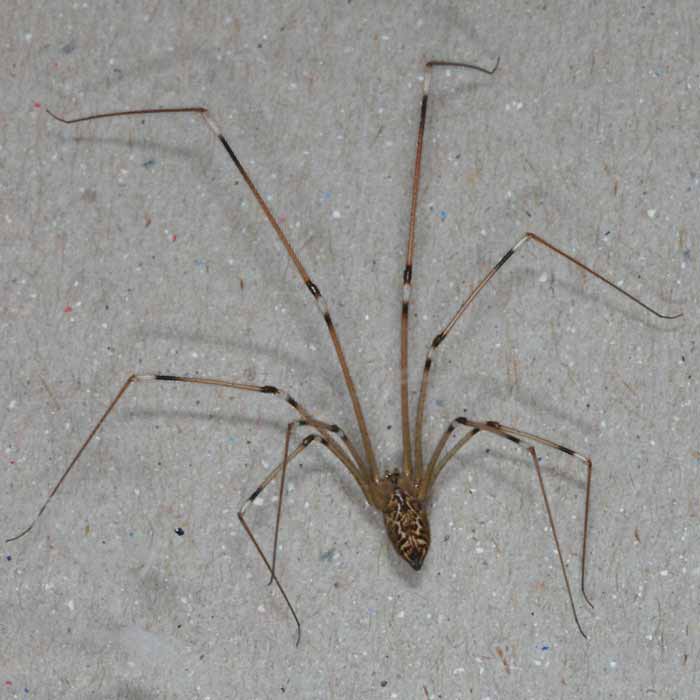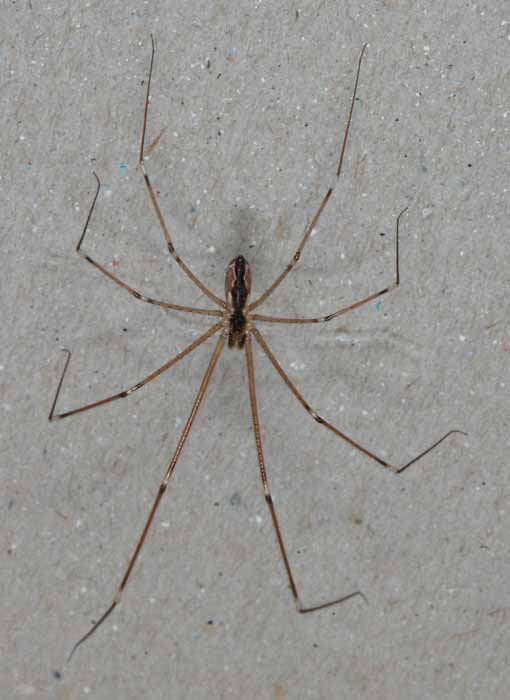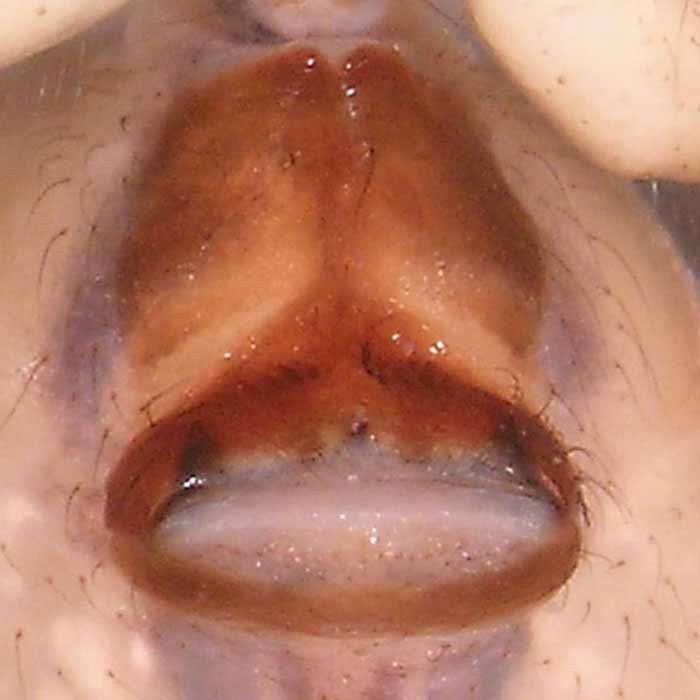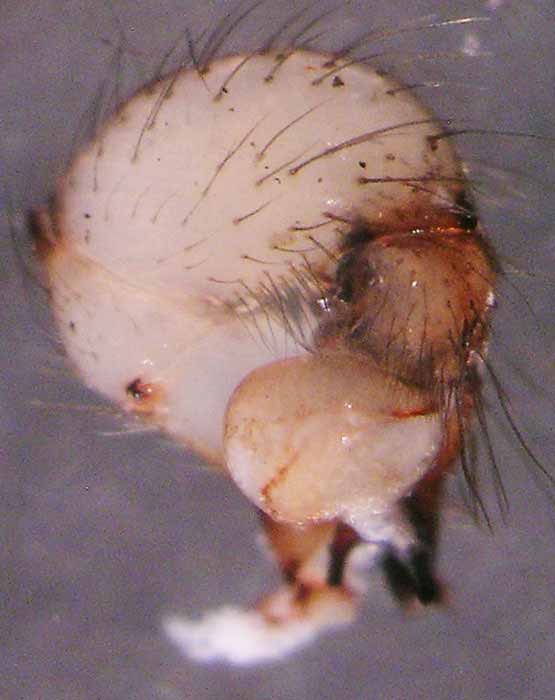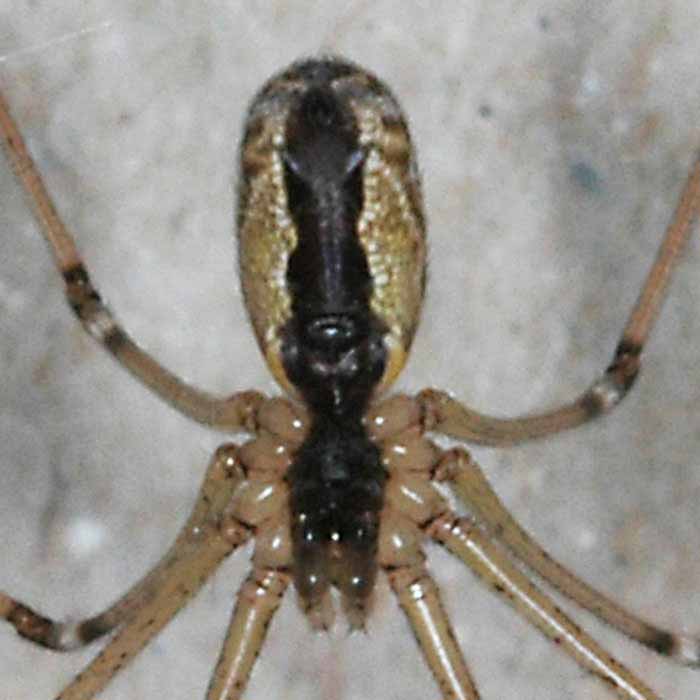Holocnemus pluchei
|
adult female, live; dorsal view |
|
adult female, live; ventral view |
|
adult male, live; ventral view |
|
female genitalia; epigynum |
|
male genitalia; palp, lateral view |
|
male genitalia; palp, medial view |
|
grape size comparison with adult spiders; male (left), female (right) |
|
diagnostic feature; dark ventral abdominal stripe |
Current valid name
Holocnemus pluchei (Scopoli) (family Pholcidae)
Recognition and diagnostic features
Legs are long and flimsy, sternum brown with brown ventral longitudinal abdominal stripe, black and white rings around leg joints. Females have swollen, featureless palps, looking like penultimate males.
Related or similar species
Psilochorus papago, Psilochorus utahensis
Spider
Body lengths when mature: male: 5 to 7 mm, female: 6 to 8 mm
Immatures resemble miniature adults.
Egg sac
Because pholcid spiders carry their egg sacs around in their fangs, one should never find one of their egg sacs in grapes. Therefore, no further information is provided because it would be moot.
Distribution
In California: Central to southern California
Elsewhere: Mediterranean region, Arizona
Not native to North America
This species has been transported and become established outside of its range.
Biology
Of Mediterranean origin, anecdotal information leans toward importation and establishment in the San Francisco area in the mid 20th century with spread south throughout southern California and east to Arizona. Incredibly common in and around homes such that it is an urban pest. Makes flimsy web in the eaves of houses and inside homes along the ceiling. Also found in shrubs and bushes. Active day and night during warmer months, scarce in winter.
Status in table grapes
Level of Incidence: uncommon
Level of Concern in New Zealand: WPNZ (May 2010) nr, BORIC (Dec 2011) nr (not listed), MAF-BPRA (2002) nr (coding definition)
Level of Concern in Australia: WPAU (2006) nr (coding definition)
Level of Medical importance: none
Common name
Marbled cellar spider for species, cellar or daddylonglegs spiders for family
Taxonomic history
Stable over the last 100 years.

